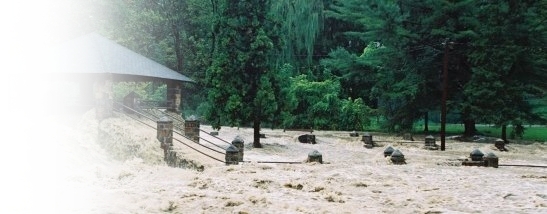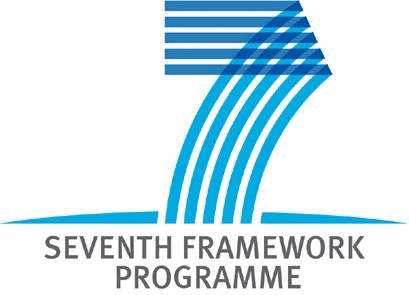Partner 12: SCHAPI

SCHAPI, the French National Hydrometeorological and Flood Forecasting Centre was created in June 2003 in response of the threat of severe thunderstorms and torrential floods. Part of the Ministry of Ecology, Sustainable Development and Planning, SCHAPI is located in Toulouse, close Météo-France. It brings together experts in meteorology and hydrology. Its main missions consist in supporting the 22 FF local services and providing flood watch, focused on FF basins, including assistance, advice on hardware and software, and training. During periods of flood risk, the watch is carried out 24 hours a day, the forecasting services keep the national and local environmental offices informed of any changes in the flood situation, as well as the media though a specialised unit. SCHAPI contributes to information activities. In liaison with the local FF services, SCHAPI publishes twice daily a vigilance map on internet (http://www.vigicrues.ecologie.gouv.fr). This map indicates the risk levels on rivers monitored for FF, i.e. 20 000 km of riverbeds of the national network, and uses a colour code to represent the hydrographic network. Furthermore, the map gives access to the real time water levels provided by the gauges located on the hydrographic network. SCHAPI and the local FF local services are on call every day of the year to publish the flood vigilance map. They are activated in response to criteria from the French meteorological vigilance map and the surveillance of the hydrographic network. During crisis periods, the map is updated several times a day. In the field of FF, SCHAPI provides nationwide scientific and technical co-ordination to determine the consistency of data, tools, procedures, products and methods, in liaison with the governmental scientific and technical organisations, such as Météo-France, CEMAGREF, as well as several research laboratories from Universities and Engineering schools.
Dr. Caroline Wittwer studied hydrogeology at the University of Neuchâtel, Switzerland, and performed her PhD in 1989 at the Nat. Company for Disposal of Radioactive Waste. She got a Swiss science foundation post doctoral grant and got a position at the Lawrence Berkeley National Laboratory between 1990 and 1993 working on the development of a 3D model for disposal of radioactive waste. In 1993, she joined the French geological survey, Brgm, as project leader for hydrogeological modelling. In 1996, she initiated the research project on integration of groundwater flow and flood, and worked on the interaction of karst system and surface flow in the south of France. In 2000, she was deputy research director to create and coordinate the secretary of the new Nat. technological network for research and innovation (more than 40 joint projects with partnerships of SME or industry were funded). She also organised a first meeting for the INCO-DEV programme under the Asia Europe Meeting (ASEM) activities in the field of water management. In 2004, she moved to a position at the Water Directorate of the Ministry of Ecology and Sustainable Development and Planning to set up and coordinate research activities of the newly created national forecasting centre SCHAPI.
Jean-Michel Tanguy obtained his engineering degree at the Ecole Nationale des Travaux Public in 1976, and his Ph. D in 1989, at the Laval University Québec on "Modelling the sediment transported by currents with the Finite Element Method". Until 1998, he was Head of the Informatics, Research and Modelling Division of the National Centre d'Etudes Techniques Maritimes et Fluviales (CETMEF), and then until 2002, advisor of the Director of a technical centre of the Ministry of Public Works. In 2003, he has been setting up SCHAPI, the National Flood Forecasting Centre, to reorganise the French flood forecasting network (SCHAPI and the 22 local centres. In 2004, he has been supporting the agreement with the JRC to participate into the European Flood Alert System. For the Ministry of Ecology, Sustainable Development and Planning, he is technical expert for the General Inspection of Environment, and has been nominated hydrological Advisor of the Permanent Representative of France to the WMO and vice-chairman of the Working Group of Hydrology for Region Europe. He is currently editing a guide named "from the Water drop to the sea" with the WMO-MEDD. His technical activities are now centred on setting up new products of distance learning for hydrology and flood forecasting.
Selected Publications
2005. Tanguy, J.-M., J.-M. Carriere, Y. l. Trionnaire, and R. Schoen, 2005: Reorganisation of flood forecasting in France - Réorganisation de l'annonce des crues en France. La Houille Blanche, 2, 44 - 48.
2003. Paquier, A., J. Tanguy, S. Haider, and B. Zhang, 2003: Estimation des niveaux d'inondation pour une crue éclair en milieu urbain : comparaison de deux modèles hydrodynamiques sur la crue de Nîmes d'octobre 1988. Revue des sciences de l'eau, 16, 79 - 102.
1997. Nicholson, J., I. Broker, J. A. Roelvink, D. Price, J. M. Tanguy, and L. Moreno, 1997: Intercomparison of coastal area morphodynamic models. Coastal Engineering, 31, 97-123.
1994. Dhatt, G., J. Tanguy, E. Peltier, and B. Zhang, 1994: Modélisation de l’évolution des fonds mobiles en mer et en rivière par éléments finis. Revue Européenne des Eléments Finis, 3, 339-361.
2003. Wittwer, C., 2003: Water management in Asia: how to identify opportunities, set and support priorities for S & T cooperation? International Scientific Cooperation Policy Serie “Success Stories”, European Commision, 26 pp.
2000. Armstrong, A., K. Aden, N. Amraoui, B. Diekkruger, N. Jarvis, and C. Mouvet, 2000: Comparison of the performance of pesticide-leaching models on a cracking clay soil: results using the Brimstone Farm dataset. Agricultural Water Management, 44, 85-104.
1994. Wittwer, C., G. S. Bodvarsson, M. P. Chornack, A. L. Flint, L. E. Flint, B. D. Lewis, R. W. Spengler, and C. A. Rautman, 1994: Design of a 3-D site-scale model for the unsaturated zone at Yucca Mountain, Nevada. Radioactive Waste Management and Environmental Restoration, 19, 90-110.




